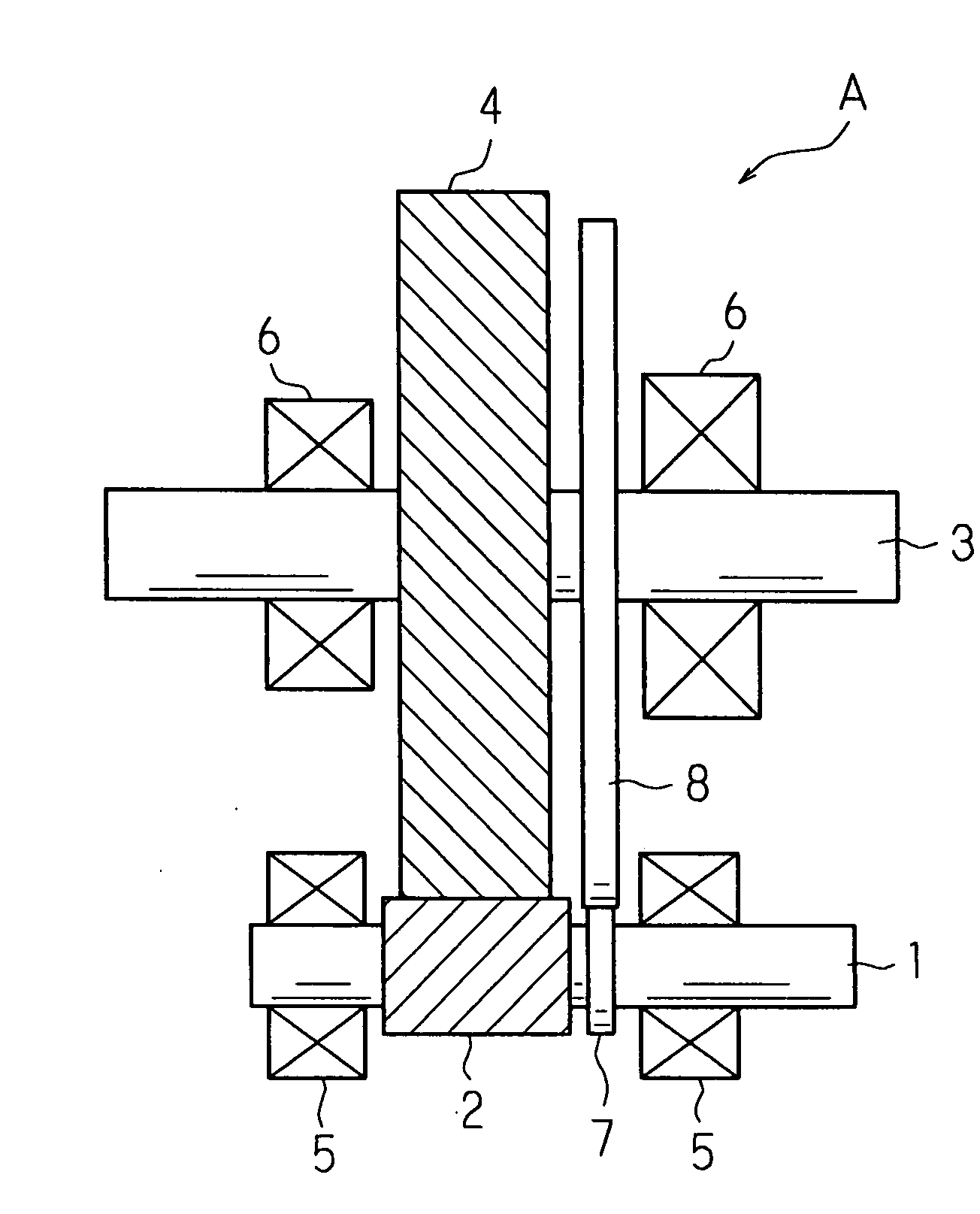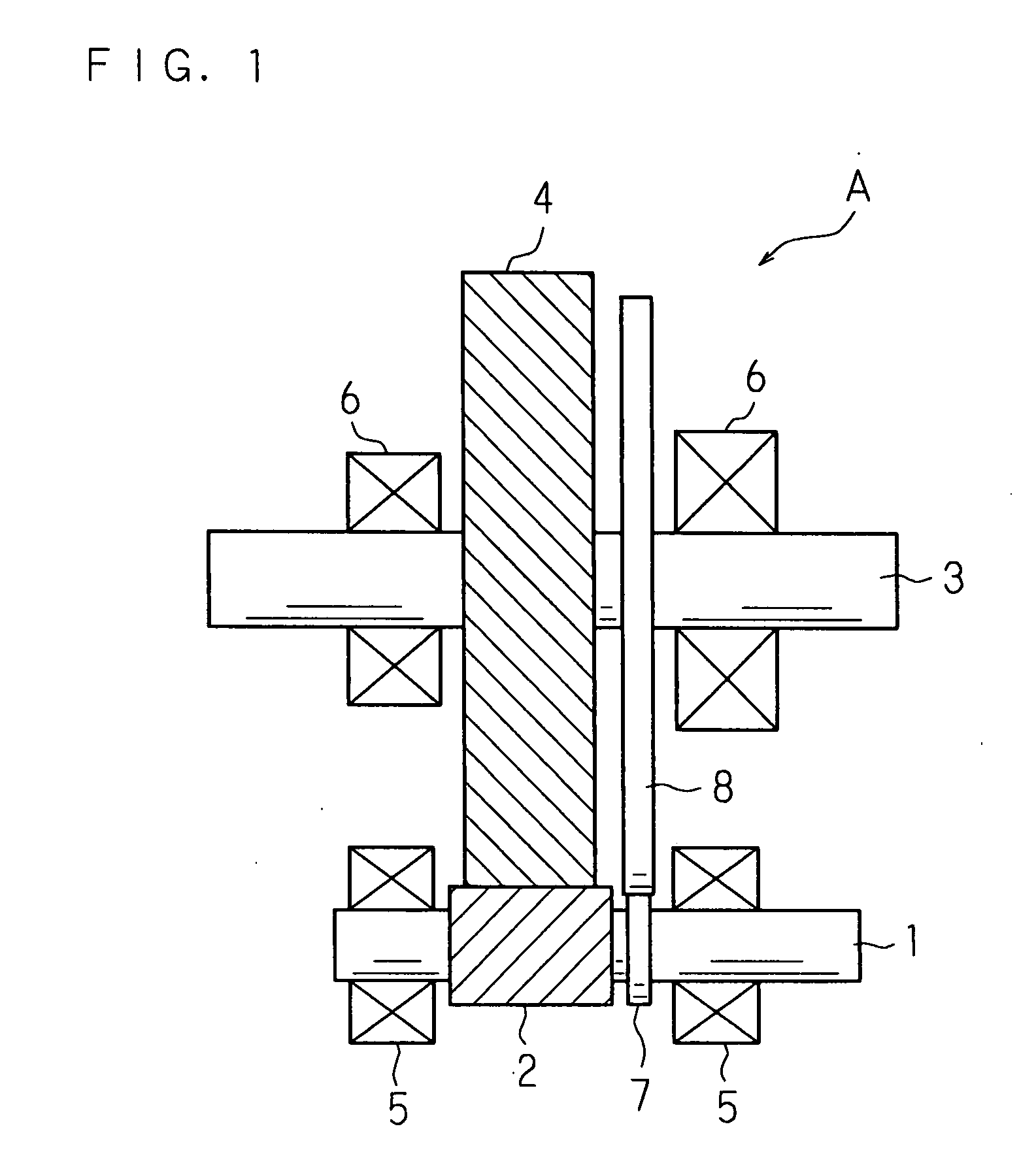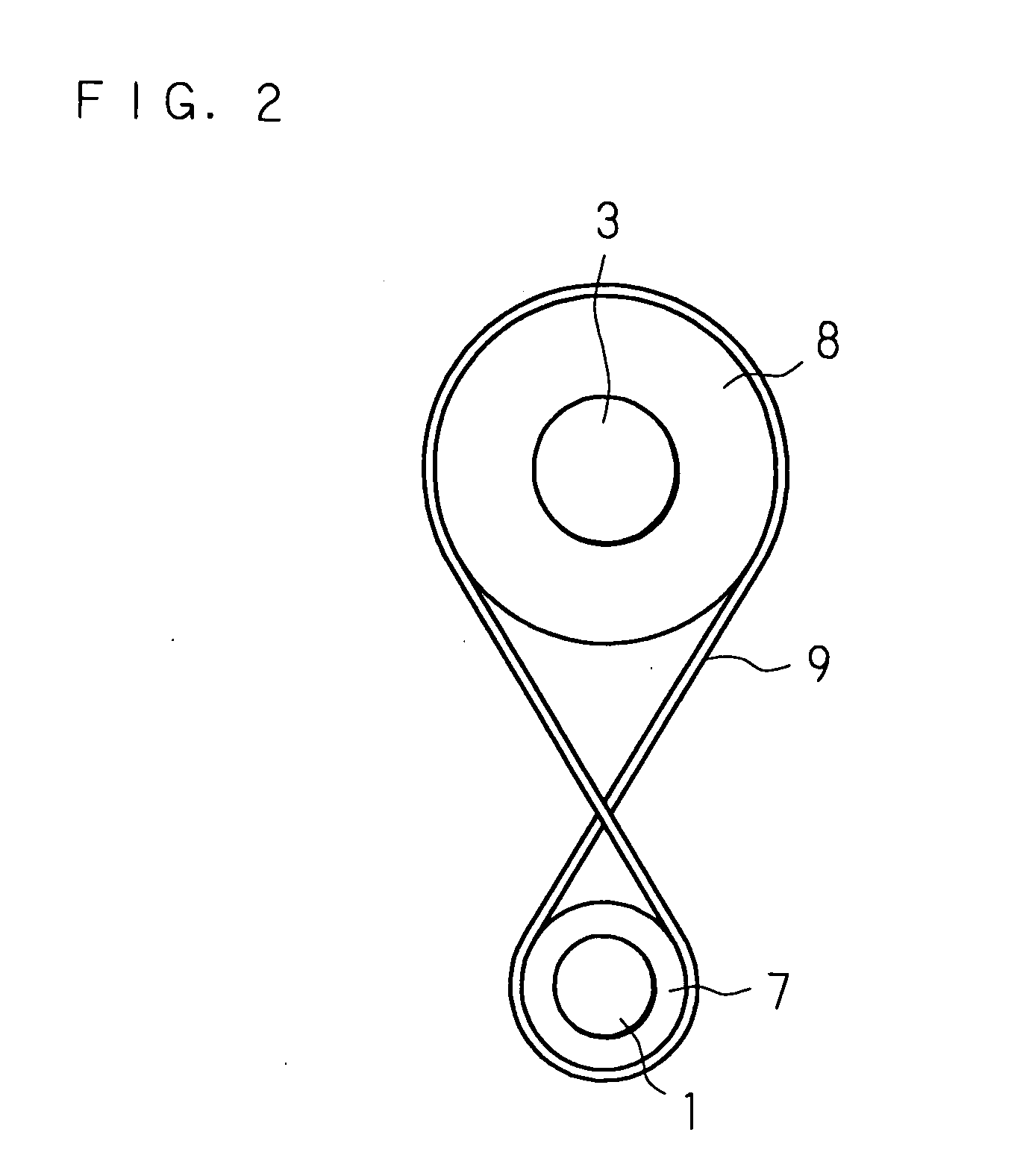Reduction gear mechanism and electric power steering apparatus
a gear mechanism and gear mechanism technology, applied in mechanical devices, transportation and packaging, gear details, etc., can solve the problems of rattling noise, relative speed generation between, rattling noise, etc., to reduce rattling noise, reduce relative speed, and reduce rattling noise
- Summary
- Abstract
- Description
- Claims
- Application Information
AI Technical Summary
Benefits of technology
Problems solved by technology
Method used
Image
Examples
embodiment 2
[0045]FIG. 2 is a schematic view showing other structures of essential sections of the reduction gear mechanism. In the reduction gear mechanism shown in FIG. 2, an endless belt 9 is put in a crossed pattern on the circumferential surfaces of the first and second rotors 7 and 8, instead of bringing the circumferential surfaces of the first and second rotors 7 and 8 into contact with each other.
[0046]In this embodiment, when the smaller gear 2 is rotated in one direction and the smaller gear 2 and larger gear 4 are rotated in mutually opposite directions in an interlocked manner, the torque of the first rotor 7 is transmitted from the belt 9 to the second rotor 8 without generating relative sliding between the belt 9 and the first and second rotors 7 and 8. The two rotors 7 and 8 rotate in mutually opposite directions, and a relative speed is not generated between the two rotors 7 and 8.
[0047]When one of the smaller gear 2 and larger gear 4 is rotated reversely and a relative speed i...
embodiment 3
[0049]FIG. 3 is a schematic view showing another structure of a reduction gear mechanism. In addition to Embodiment 1, the reduction gear mechanism shown in FIG. 3 further comprises a third rotor 20 which faces the second rotor 8 in the axial direction and is in contact with the circumferential surface of the first rotor 7; and a resistor 21 such as a viscous material which is interposed between the second and third rotors 8 and 20 to apply resistance to the relative rotation between the second and third rotors 8 and 20. Note that the third rotor 20 and the resistor 21 constitute a resistance section.
[0050]In Embodiment 3, the second rotor 8 is fixed to the second shaft 3, and relatively small fictional resistance force is applied between the first and second rotors 7 and 8. The third rotor 20 is composed of a disk having almost the same diameter as the second rotor 8 and loosely fitted and supported on the second shaft 3 to permit relative rotation, and larger sliding friction resi...
embodiment 4
[0057]FIG. 4 is a schematic view showing still another structure of a reduction gear mechanism. The reduction gear mechanism shown in FIG. 4 further comprises a fourth rotor 22 which faces the larger gear 4 in the axial direction and is in contact with the circumferential surface of the first rotor 7; and a resistor 21 such as a viscous material which is interposed between the larger gear 4 and fourth rotor 22 to apply resistance to the relative rotation between the larger gear 4 and the fourth rotor 22, without the second rotor 8 in Embodiment 1. Note that the fourth rotor 22 and the resistor 21 constitute a resistance section.
[0058]In this embodiment, the fourth rotor 22 is composed of a disk having almost the same diameter as the larger gear 4 and loosely fitted and supported on the second shaft 3 to permit relative rotation, and relatively large fictional resistance force is applied between the first and fourth rotors 7 and 22. Movement of the fourth rotor 22 in one direction al...
PUM
 Login to View More
Login to View More Abstract
Description
Claims
Application Information
 Login to View More
Login to View More - R&D
- Intellectual Property
- Life Sciences
- Materials
- Tech Scout
- Unparalleled Data Quality
- Higher Quality Content
- 60% Fewer Hallucinations
Browse by: Latest US Patents, China's latest patents, Technical Efficacy Thesaurus, Application Domain, Technology Topic, Popular Technical Reports.
© 2025 PatSnap. All rights reserved.Legal|Privacy policy|Modern Slavery Act Transparency Statement|Sitemap|About US| Contact US: help@patsnap.com



